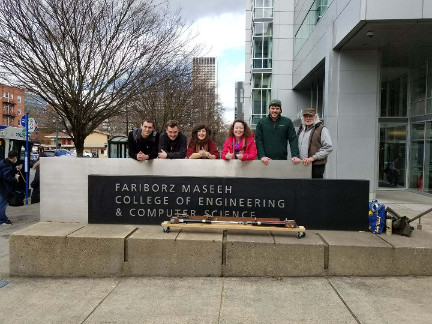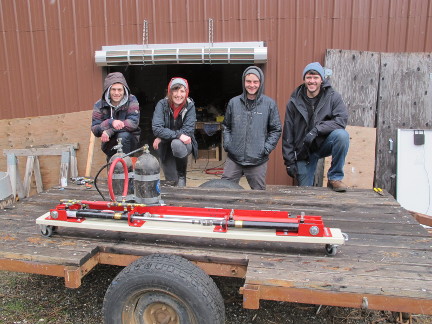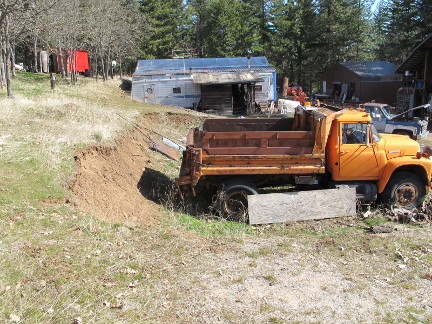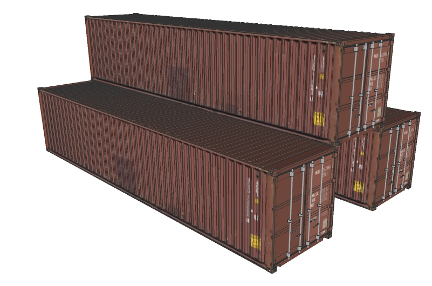Spring Update 2018Lots of exciting developments at this end, and there are two that I especially want to tell you about: the PSU Capstone project and the Triad. The Little BeastB2M has entered into a relationship with the mechanical engineering college at PSU to develop the autonomous controls needed to operate the biogas compressor. Here's a short video of me operating the first two stages of the compressor manually.A key part of our work involves taking an industrial scale process and "shrinking" it down to the scale needed to serve small communities. And in order to do that, the control systems need to be intelligent and user-programmable. Now that we have the first three stages of the compressor in place, we need to start developing the micro-processor based controls that will enable the compressor to run on its own, and to call for help when needed. That portion of the work is being done by a group of senior mechanical engineering students over this winter and the coming spring. In order to give them a working model to use in developing the controls, we made a small, two-stage demonstration compressor that they can use to test out their control systems and software. Here's a pic of the first time the Capstone team got to check out how the demonstration compressor would be laid out.
Once the remaining hardware had been fabricated and installed, the team returned to Windward and we installed the hoses on the compression side. By then, the team had decided that Demonstration Compressor was too prosaic a name, and had rechristened it the "Little Beast".
The Little Beast is currently residing in the PSU laser lab as the capstone team undertakes to calibrate its sensors, and hook up the solenoids that will control the compressor's drive cylinders. I'm deeply impressed by the interest and energy these students are bringing to our project. Once they've demo'ed their work this coming June, we'll use this portable version to put on B2M demonstrations at Earth Days and sustainability oriented events. In time, we'll use it to compress the nitrogen gas given off by the Pressure Swing Adsorption unit that separates air into nitrogen and oxygen. We'll use the oxygen in the auto-thermal steam reformation part of the B2M process, and the nitrogen to purge oxygen out of containers that will store synthesis gas before it goes into the reactor. The TriadWhile we continue to work to complete Stage One (1 gallon/day) in the conversion of woody biomass into liquid fuel, we're also wanting to start construction of the Triad. That's the structure that will serve as the framework for Stage Two as we move on to the challenges involved in producing ten gallons of fuel per day. Most of what we learn creating Stage One will guide us in developing Stage Two, but there's also a general principle in engineering that when you increase the size of a system by a factor of ten, you have to review every component.And, because woody biomass is a solid, there are materials handling issues that have to be resolved when the volume of material processed goes up tenfold. The history of this sort of work shows that the old doctrines of "haste makes waste" and "short cuts usually lead to failure" can apply with a vengeance. This is where critical path concepts come into play; while we still have lots to learn about the initial process, it's important to get started addressing the known infrastructure needs that will have to be in place so that we can quickly incorporate what we learn from building Stage One into the design of Stage Two. Another key element of our approach is to incorporate surplus resources when we can. In this case, used shipping containers offer a way to build a system in one location, and then use the transportation system to move it to point of use. So far, we've excavated the site where the Triad will be located, something which required some serious heavy equipment since we strive to locate working buildings on sloped land that's otherwise unsuitable for growing food.
Once we have a retaining wall in place, we'll position three shipping containers in this area in a triad configuration.
The facing walls of the two containers on the bottom will be opened up to create a 24'x40' interior work space. The interior of the upper container will provide office space and a control center; the uphill exterior and the roof of the uphill container will provide space to mount the compressor and the various reactors; the roof of the down hill container will be home to the gasification equipment that will process the woody biomass into a substitute for natural gas. Thank you again for your faith in this project, and your willingness to support the work. We couldn't do this without you. If you're not already a True Friend of this work, but would like to be, you can sign up here. ~~ Walt |



